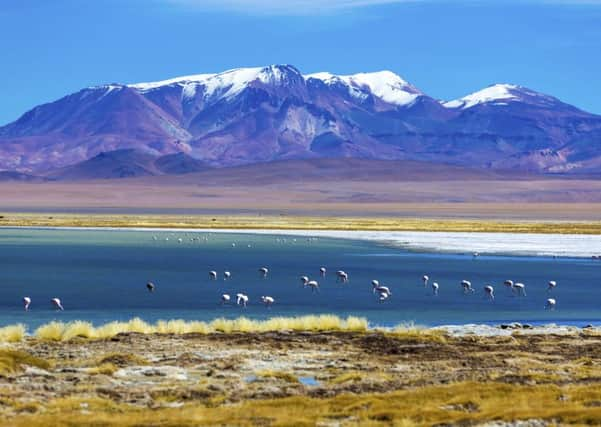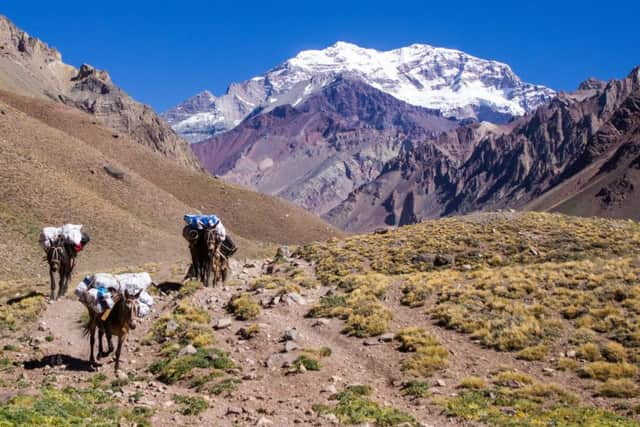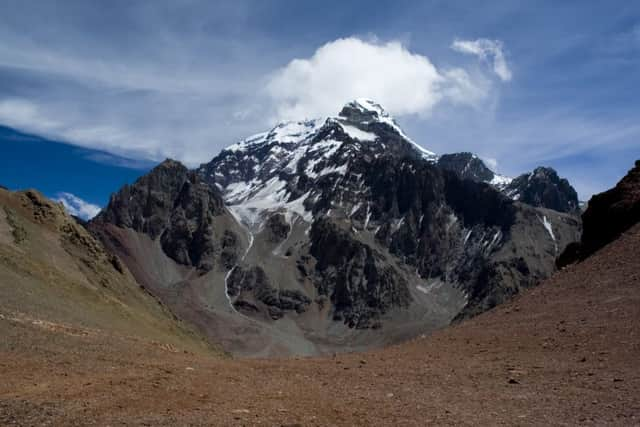Travel: Summit fever in Chile


Sharing a passion with your loved ones should be a carefully calculated risk but I took my children up a 14,700 foot mountain completely by accident. I was on my way to the Andes to climb Aconcagua and persuaded myself and my four children that a relaxing Christmas holiday in Chile’s Atacama desert beforehand would not only provide a taste of adventure for us all but would help me acclimatise to the altitude in preparation for a big climb.
It was several hours after we arrived before I realised I had inadvertently booked us into a full-on action holiday. I was hoping the children might not notice but the white boards advertising an alarming array of expeditions were hard to ignore. From the moment we arrived there were deadlines fast approaching and men in shorts with whistles around their necks were constantly on hand to alert us to these impending departures. “This,” said one of my children, “is not a holiday, it is a boot camp.”
Advertisement
Hide AdEarly breakfasts were routine, but there were packed breakfasts for those unwilling to wait until dawn. We learned all of this as we strolled towards the restaurant with coffee and eggs on our minds only to be admonished for holding up the group. I didn’t dare admit that two of my children were still sleeping.


We skipped the first morning’s trip and instead held our own crisis meeting. We quickly agreed that whilst we weren’t really ‘that’ sort of family nor were we the family to duck an adventure, and even though we hadn’t packed the Lycra we could probably pretend this was an oversight. After a couple of false starts we were soon able to embrace the activities wholeheartedly, without a hint of irony.
Our names went on the white boards, we had group meetings with enthusiastic and overwhelmingly pleasant people and we were the first to breakfast. We cycled to the salt flats, floated in the salt lakes, rode horses through the desert, and undertook a 20-mile hike beneath a relentless sun on Christmas Day. We each took responsibility for championing a different expedition and, after many days of group activity, I suggested a climb up the nearest peak of significance.
I had been climbing mountains with increasing obsession and ambition for a few years but my children, aged 25,15,12 and 8 were displaying various degrees of indifference. Regardless, I was wildly enthusiastic.
The climb we had signed up for was not technical and the conditions were perfect. The approach was slow, a beautiful meander through some dramatic lava-peppered scenery in one of the driest regions on earth. Ancient cacti provided colour and spumes of spray from hot springs were there to remind us of the volatility of the mountains. Flamingo and alpaca studded the landscape and distracted us all from the gradual ascent. The peak was beguiling and coy, hiding its wares so the climb ahead was never daunting. But as with all peaks of note, the final ascent required the walker to find another gear just at the very time energy levels were at their lowest.


Eoin, my eldest, wore inappropriate footwear on the strongly voiced basis that I hadn’t told him what sort of holiday it was. He could have hired some boots at the hotel but this would have cost him the moral high ground so he soldiered on.
Advertisement
Hide AdNext came Poppy. A camera swung uncomfortably around her neck but she picked her path with the nonchalance of a seasoned walker. As she continued ever upwards she was locked into conversation either with Eoin or with the youngest, Sonny, who scampered around them both like an excited puppy.
Millie, at 12 had a reputation for being both sporty and plucky but she fought the mountain from the outset. She had been slowing down for some miles and as we began the steepest section she struggled to find her breath. I reassured her that there was enough air to breathe, but the onset of panic caused her to hyper ventilate. I slowly edged her upwards by pointing out goals to aim for – a noteworthy rock, a particularly tall cactus, I picked out features that were at least 20 metres away, but as we edged further up, even these short bursts became too ambitious. Soon we were striving for markers that I could almost reach out and touch. I tried my hardest to disguise the edge in my voice and when our guide came to check on us she commented on my method, complementing me on my patience. I reset my face and vowed to try harder because, in truth, I was feeling far from patient. But we persevered: she with her breathing, me with my parenting.
Advertisement
Hide AdSlowly, painfully, we edged our way up. The other children had long since disappeared beyond a false summit and I imagined they were either on their way down the far side or enjoying the breathtaking landscape. Eventually we pushed ourselves up and over the last ridge but instead of celebrating my eyes were immediately drawn to the sight of my youngest, who lay curled up in a foetal position. The two eldest were trying to take care of him as they waited for us but he didn’t want to be touched. This I understood, I had seen it before in adults.
But he was tiny, a slight eight year old, so I was able to pick him up and march him down the far side of the mountain. As soon as the air became richer in oxygen, his headache lifted. With every 100 metres of descent he felt stronger.
Everything I knew about walking at altitude, about taking it slowly, about allowing your body to adjust as carefully as possible I had somehow ignored while I watched with joy as my littlest child raced ahead.
We were quickly at the foot of the mountain, relishing our meagre sandwiches and counting our blessings as we lazed by the hot springs. Well? I asked the eldest. “I get it,” he said, as he puffed on a cigarette. I knew exactly what he was responding to – the chemical rush that accompanies the re-oxygenation of your blood is one of the most incredible feelings in the world. It’s not the conquering of the mountain, it’s the intoxication that comes from feeling as bad as you could possibly feel swiftly followed by feeling better than you’ve ever felt in your life.
It’s addictive.
Well? I asked the next eldest. She was non-committal, claiming to be uninterested in following in my footsteps. (Though she has since gone on to climb several mountains.)
Well? I asked Millie, who by now was swigging from a cold can of something sweet and fizzy and grinning wildly. “I’m proud of myself!” And I was proud of her too. For not lashing out at me, for not making it my fault and for not making us turn around. She fought the mountain and she won.
Advertisement
Hide AdWell? I asked Sonny. But he was fast asleep and, behind fluttering eyelids was already shaping the story into one of his many childhood triumphs. Later that night his mountain headache would pale into insignificance. In pursuit of the best table in the bar and a large pisco sour for his mother, he would trip on a rug, fall, and pierce his ear and head with the corner of a table. This would be followed by a 90km road trip to the nearest hospital and several stitches. But for now, he had climbed a mountain and brushed off altitude sickness and his sleep was well deserved.
• The Museum of Things Left Behind by Seni Glaister, published by Fourth Estate, priced £12.99, is out now.